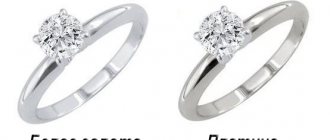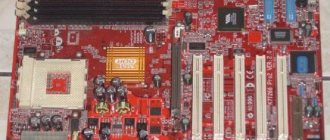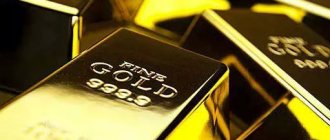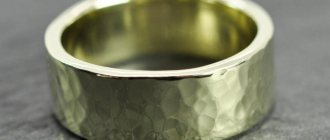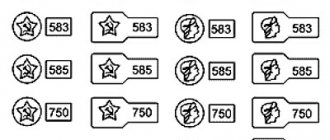Perhaps one of the most desirable finds for a treasure hunter is gold. Of course, for an amateur archaeologist, products with history are valuable - the older they are, the more valuable. For the average digger, modern jewelry is better - it has a higher standard. And there is a completely separate clan of native gold miners. Since 2017, the ban on private gold mining has been lifted in Russia, and no one is prohibited from walking around their site using a metal detector for gold.
What is a metal detector and why is it needed?
A modern metal detector is a device that determines the presence of metal objects of different chemical composition and size in the ground, in water - in general, in any underlying surface.
Design and principle of operation
Instrumental search is based on the principle of recording a reflected signal. This is roughly how an echo sounder works - it sends out a sound wave that is reflected from the bottom, grass, fish and paints a picture of the underwater world. The metal detector emits radio waves and, based on the nature of the response signal, determines whether there is metal under the search detector.
So, for the metal detector to work, you need two antennas - transmitting and receiving. In metal detectors that are built according to the VLF - Very Low Frequency and PI - Pulse Induction schemes, these antennas are usually combined in one detector, which is traditionally called a coil (for round detectors with a diameter of up to a meter) or a frame (for square detectors with a side of 80 cm or more ). These metal detectors require coil displacement - the signal is emitted in one place in space and received in another. That's why they wave them, much like a mower with a scythe.
A metal detector made according to the RF - Radio Frequency scheme is usually characterized by two coils spaced one and a half meters apart from each other. Although, other designs are also possible. This metal detector does not need to be moved to operate.
There is another type of metal detector - pinpointers. From English pinpointer. Pin - pin, pointer - pointer. That is a very accurate pointer. Its operating principle is based on recording the interruption or change of eddy currents by a metal object.
Advantages and disadvantages
Each scheme has its pros and cons. VLF is suitable for searching for small objects; when using it, discrimination is possible - excluding objects with a certain conductivity and/or inductance from the search. This is a huge advantage over other schemes. But the downside is the depth. Such metal detectors see coins at a depth of up to 60 cm - an outstanding result, available, for example, to such devices as the Rutus Alter 71 or Rutus Argo NE - probably the best devices at the moment for searching for coins and gold. An object such as a helmet - a meter, a barrel, a potbelly stove, a car - up to 3 meters, but this is also an outstanding result, which is not available to all devices.
PI also has the ability to discriminate, but this is, in principle, discrimination based on size rather than conductivity. Depth is a plus.
RF has no discrimination at all and rings everything that falls under the coil. But it also sees deeper than VLF. RF often does not respond to small objects; on the contrary, such a metal detector is weaned from ringing for small things, because its area of application is searching for large metals. For example, pipeline routing.
Can any metal detector see gold?
The answer is negative. Gold is seen by VLF and PI metal detectors. RF, in principle, rings for everything, but does not see small things.
It’s better to use PI where nothing else will ring except gold and silver - but these are some ideal soils.
For everything else - VLF. If we want to look for gold, and silver, and horse meat, and coins - for advice and an empire, and to go through the war, and through the old days - there are practically no alternatives. There are additions in the form of depth explorers based on the PI principle. But definitely not a complete replacement.
Composition and impurities of nuggets. Natural electrum alloy
The formation of precious metal particles cannot be contained in a pure form; they always include impurities:
- iron;
- mercury;
- bismuth;
- copper;
- silver, etc.
Most often, nuggets contain silver (the most significant proportion). Its combination with gold affects the color of the formation of precious metals - they become greenish. This alloy has its own name - electrum. The content of other metals is minimal.
Gold clusters
Types of metal detectors for gold and their specifics
VLF metal detectors are usually used to search for jewelry. Where do people lose jewelry if it’s not their own apartment? That's right, most often on the beaches. Hence the specificity that manufacturers sometimes reflect in their names.
Beach
Designed for searching on fresh and salty beaches. The requirements for such a metal detector are a waterproof coil and decent ground adjustment. The fact is that the more the soil is mineralized - and a salty beach is mineralized by all means - the more the soil itself affects the search, making it more difficult. And the metal detector must be able to distinguish the signal from the ground from the signal from the cherished target - gold and silver.
In principle, the already mentioned Rutus Alter 71 and Rutus Argo NE can be used as such metal detectors. Fisher F75 SE, Minelab X-terra 505 and 705, and Minelab Safari are also good.
Water
People lose jewelry not only on land or at knee-deep depths. Often their jewelry falls off where a normal person would be “up to his neck.” It is difficult to reach such depths with just a waterproof reel. It's almost impossible. Therefore, there is a separate class of devices - completely waterproof. As a rule, such a metal detector can be lowered into water to a depth of up to three meters - quite enough for both searching with feet on the ground and for snorkeling with a metal detector.
Such devices include, for example, Nokta&Makro Anfibio, the legendary Zozo - Minelab CTX 3030, and simpler models - Nokta&Makro Simplex.
Underwater, the sound of the speaker is basically audible. But not the same as in the air, so underwater they only work with headphones, wired or wireless.
Deep
In this context, deep ones are deep-sea ones, with which you can dive deeper than three meters. As a rule, a deep sea metal detector is more of a large pinpointer, a la the Quest Scuba Tector, although there are exceptions.
With such metal detectors they search, for example, for the gold of the conquistadors - that is, metal in products and coins.
Let's change the context. There are deep metal detectors that are designed to search for deep metal in the soil. Unfortunately, these are not suitable for searching for small jewelry and small nuggets - they are not designed for searching for small objects. Their specialty is deep-lying massive metal. For example, with these they dig cannonballs from a meter deep. Or they discover dugouts and dugouts by the potbelly stoves remaining in them at a depth of 2 meters or more.
Shapes of nuggets in nature. Unique names
When a seeker digs the ground, extracts ore that is located underground or in the surface layers of river mouths, he does not even suspect that he may find a large formation - a nugget. Shapes:
- dendrites - branching intergrowths;
- partially faceted formations;
- isometric polyhedra;
- inclusions of irregular shape, flattened, elongated, etc.
Taking into account their shape, the nuggets are given names:
- "Hare ears";
- "Mephistopheles";
- "Camel".
Gold occurs in nature in the form of nuggets
Requirements for a metal detector for effective gold search
Typically, a metal detector for gold should be able to do the following things:
- Qualitatively share goals. That is, to distinguish gold, which has far from the best conductivity among metals, from iron. On devices with vDI from 0 to 99, gold often has a vDI in the region of 40-45, and ferrous metal - in the region of 30. The more ferrous metal is affected by rust, the more “colored” the signal it gives.
- The size of the object of discrimination. A metal detector for gold must “catch” the smallest grains of metal, that is, there are certain characteristics.
- Depth. The deeper the metal detector goes, the better.
- Detuning from the ground. Gold is often accompanied by other minerals that can provide leads, even false targets. To cut off such alarms, the ground balance is adjusted manually or automatically.
Geologist's opinion
Dovgopolov Dmitry Vasilveich
Geologist
The modern method of extracting gold from ore makes it possible to speed up this process up to 8 times. It helps reduce the intensity of the negative impact of copper, as well as the use of fewer reagents during technological operations. I note that when using the new (ammonia-cyanide) method, it became possible to extract up to 90% of the gold in the ore, which is considered a good indicator with relatively low investments.
Criteria for choosing a metal detector for gold searching
The requirements are described, the criteria for choosing a metal detector for coins and gold directly follow from the requirements. We will not repeat ourselves, we will simply decipher how to determine whether a metal detector meets a particular requirement or not.
Division and discrimination
We watch the candidate's tests on YouTube. In Russian they usually write “separation test”, and English-speaking users call such a test “nail test” or “board test”. Because they place an ordinary iron nail next to or on top of the coin. And so that objects do not move, they are secured with dielectric fasteners on the board.
And discrimination and filters - read the description. The thinner the discrimination scale is cut into, the more accurately you can cut off unwanted targets, and the fewer extra holes you have to dig.
The size of the object of discrimination
In short, the shorter the wavelength, the smaller the metal detector will respond to objects. And the wavelength is directly dependent on the frequency - the higher the frequency, the shorter the wave.
The minimum frequency for a gold metal detector is 14 KHz. With less frequency, the likelihood of detecting small objects is greatly reduced.
Depth
We read manufacturers' descriptions, tests, articles, watch videos - how this or that device reacts to fine gold. The only question is that many testers do not bother with special MD settings and work “by default”.
Ground Balance
In English this is usually called "ground balance". We read the description, it says everything - either it is not there, or it is manual, or automatic. The best thing you can come up with is when there is an automatic one with the possibility of manual adjustment.
What can you expect from the finds?
There are several options here. And expectations depend not only on weight, size, material. age of the find. But it also depends on the country in which the successful treasure hunter dug it up. For example, in Russia, from finds over 100 years old, you can expect both sudden wealth and real prison time if you try to madly sell your find without even changing your clothes after the cop. The editors are not involved in describing illegal schemes for the legalization of finds. Legally in Russia, you can count on 50% of the value of the treasure, in equal shares to the owner of the land and the treasure hunter. Unless, of course, they agreed otherwise in advance. We learn materiel.
If the excavated item is not older than 100 years, it is worth studying its value not from the metal content, but from the point of view of historians, collectors, antique dealers and reenactors. For example, most war finds are of interest specifically to the listed categories of citizens, and not to numismatists or jewelers.
By the way, when digging in war, you can expect shell shock, injuries and even death from the finds - unfortunately, in many ammunition explosives still retain their lethal properties.
Read also: AKA: review of the model range, comparison, tests, reviews, examples of finds
Price categories of metal detectors
Several factors come into play when it comes to pricing:
- originality of the model - it was made specifically for gold or obtained by increasing the frequency of an existing one;
- marketing - you can hang a “golden” badge on the most ordinary ground metal detector;
- manufacturer's reputation;
- completeness.
Experts distinguish the following price categories for metal detectors:
- Up to 10,000 rubles. As a rule, such metal detectors are not suitable for searching for gold at all.
- Up to 15,000. Very rare models give any decent results. Moreover, there are no high-frequency devices in the range.
- Up to 30,000. You can look for something worthy in this segment, but it’s better to move on to the next one.
- Up to 60,000. In this price range there are already many noteworthy models that meet the requirements for gold metal detectors.
- Over 60,000. There are decent devices. And even very worthy specialized devices.
If searching for gold and coins is a profession, then, of course, it is better to watch segments 4 and 5. Segments 3 and 4 are suitable for amateurs. The first two segments are more likely for fans. To search sporadically, for fun. Or for a targeted search for scrap metal with the aim of selling it.
Places where you can find noble metal in nature
Most often, there are no obvious and too obvious signs that it is in this particular area that gold-bearing rock is formed in the bowels of the earth. To find deposits, first of all, attention is paid to certain places where there was high pressure and elevated temperature. Most often, when searching for gold-bearing rocks, they consider:
- rocks: gold crystals are constant satellites of iron, so one of the signs of their presence is black sand (magnetite); also, particles of precious metal and nuggets are formed in quartz, which can also serve as a sign that you can focus on when searching for gold;
- mountain rivers and streams, including dry ones, with high banks: you can start the search with a metal detector, inspect the dried mouths of rivers where gold mining was carried out, they are usually found not far from the current bed, another way is to examine the banks, because they can sediments of gold particles will remain (above the water level), the most attentive prospector will find crystals in areas where the river has long flowed (the terrain may change, so they study old maps);
- sea water: the search for gold could also be carried out in reservoirs, but this is not so easy to organize, since there are no effective and sufficiently environmentally friendly methods for implementing such an idea, but experts say that this would make it possible to obtain 10,000,000 000 tons of precious metal.
Finding gold is a very long process
Comparison of popular metal detector models
When searching for gold, coins, military relics, antiquities, the main tool is not a shovel, not a special one, but the best metal detector for gold. And the head of a treasure hunter. You can look until you're blue in the face for coin trays in a field where no one has ever set foot, only a tractor has passed by twice - once to plow, and once to mow.
You can buy a sophisticated e-trac, and, without understanding the settings, miss the finds that a thinking digger with an x-terra 505 and a standard DD-coil will pick up for you. Despite the fact that, in theory, a grater is generally not suitable for gold.
Let's leave the lyrics alone, let's move on to popular models that have the word “Gold” in the name. These are, for example, Garrett AT Gold, Makro Kruzer, which also has a modification for gold, Nokta Gold Finder, Fisher Bug DP.
These are devices with different prices and different frequencies, but they are all characterized by excellent separation, high sensitivity to small targets, and fairly high operating frequencies - from 18 and 19 kHz for Garrett and Fischer to 56 and 61 kHz for Turkish athletes.
The Golden Kruzak is also waterproof up to 5 meters.
In theory, the Garrett ATX should rule everyone, unless you don’t mind paying 150,000 rubles for it. It operates on a PI circuit and, perhaps, will be more effective than universal VLF devices.
There is also XP Gold Maxx Power for almost half a million. But the VLF circuit and the operating frequency of 18 KHz seem to hint that there are considerable show-offs behind such a price.
The editors are fully aware that building ratings is a futile task. Finding gold is perhaps the highest treasure hunting skill. Therefore, an understanding person will choose the best metal detector for gold for himself, without being guided by the opinions of others.
The legal side of gold mining by private individuals
You can find a real nugget in the ground and even bring home a real nugget, but it is important to understand what the law says about this. The possibility of introducing changes to the legislation regulating the mining of ore containing gold crystals is currently being considered. At the same time, the service life of the areas where work is carried out is limited, and their size is also determined.
Interesting: in Australia, the procedure for obtaining a license takes a matter of seconds. Any citizen of the country can receive it, and the validity period of the document depends on the region (it is 1 year or a lifetime permit for gold mining is given).
Procedure for obtaining a license
Previously, only legal entities could engage in gold mining. Today, such an opportunity has appeared for individual entrepreneurs, but only if the business form is registered - individual entrepreneur. It is necessary to contact the territorial body of Rosnedra to obtain a license to handle the precious alloy. Ownership rights to a plot for a period specified by law can be obtained after submitting an application to participate in the auction. The documents required for this are presented. After winning, you can get a license.
Mining license
Conditions for precious metal mining
It is allowed to begin work after receiving a license, and its validity period varies:
- up to 5 years – for individuals;
- 20-25 years – for legal entities.
How to use a metal detector correctly
First of all - and not later, as Russian people like to do - read the instructions. Not only will she tell you, she will save you. For example, from turning on a metal detector in an apartment stuffed with metal and its immediate failure due to overload.
Equipment setup
We believe that we have decided on the model of a metal detector for gold and have chosen, for example, Minelab Safari or Fisher F75 SE.
First of all, we deal with ground detuning. If necessary, we pump it out. If not, turn on the machine.
The next step is to adjust the sensitivity - to the maximum, but so that there are no false positives. Or almost none.
Next we set up discrimination. We exclude ferrous metal. If we want only and exclusively gold, we can cut out segments to the right, except for the right one - it always works.
If the metal detector has a thrash hold - a threshold sound - be sure to set it up too. Often a small thing does not give a clear signal, but only interrupts the trash hold - such an interruption will tell an experienced treasure hunter more than a loudspeaker screaming at the top of his lungs to a beginner.
By the way, if we consider universal solutions, then Polish new products immediately come to mind - Rutus Argo NE and Rutus Alter 71. This is where the work with thrashhold is done perfectly.
Where to start looking for gold
If the Klondike is unattainable and you don’t even really want to go to Kolyma, a treasure hunter can try his hand at searching for gold in crowded places in nature.
On public beaches
The site has material on how to properly look for jewelry on the beaches. Let's not repeat ourselves, just note that people are strange - why not leave the jewelry at home or in a hotel?
Beach Cop with Metal Detector.
Let us remind you that not all beaches allow you to walk like this, casually waving a metal detector. We read the article and prepare for the legal aspects.
Watch the video of the channel Search for Gold - Aleksey Schwarz. This is the kind of gold jewelry you come across on the beaches.
Where should you start your search? Popular literature about gold mining
Many people still follow in the footsteps of gold rush miners. At the same time, other areas where gold-bearing ore is formed are considered, but everyone takes the same steps. You need to find out how to find gold in the ground.
To do this, a beginner should study the theory: identify signs of the appearance of gold crystals, pick up printed publications of past years in the archives. You need to look for references to the development of a gold mine.
Literature is studied that contains the basics of the precious metal mining process and recommendations. It describes the technologies and methods used. You can learn about all this from the book “Where to look for gold. A practical guide to prospecting and mining of gold”, author Rudolf Kavczyk. It is possible to download it, but most often an incomplete version is available on the Internet. When ordering, you are asked to choose any region of the Russian Federation (from Altai to the Moscow region), Kazakhstan, etc.
Gold mining is the oldest sphere in the mining industry
Geological analysis of the deposit
When the scope of work has been determined, an area has been found where, according to a number of indicators, there should be nuggets or at least inclusions (particles, crystals, gold dust), the assessment of soil parameters begins. Conduct geological analysis:
- the structure and composition of the soil is studied;
- signs of gold ore are discovered;
- All necessary analyzes are carried out, some are carried out directly on site, including mineralogical, which allows us to assess the prospects of the object where work is planned to be carried out.
At the same time, a search for primary deposits is carried out, because thanks to geological analysis, the areas of gold crystal placers are determined. These processes are interconnected, since placers are always located near primary deposits.
Based on the results of geological analysis, it is determined which mining method is the most rational: open-pit, underground.
Placer gold deposits are formed as a result of processes of erosion, destruction and redeposition of ore body material
Types of gold deposits in nature
It is not practical to simply dig in randomly defined locations. It is necessary to check that natural resources in the form of gold ore deposits are located exactly where the decision was made to begin work. Clear signs of the presence of gold particles are detected when deposits are identified, among them:
- quartz strata containing pure gold: the most common form of gold ore, found in two types (gold-quartz, gold-sulfide-quartz);
- eluvial deposits at the foot of the mountains: formed on the slopes of the mountains - next to the root source;
- alluvial: spread in the form of particles over significant distances, the source of formation is a mountain, from the slopes crystals along with the rock are spread throughout the surrounding area, the river contributes to this, knowing this feature, it will be easier to determine where gold can be found;
- residual deposits near the vein: gold is obtained through natural processes in which residual endogenous particles of precious metal are overgrown with exogenous gold, which contributes to the enlargement of nuggets;
- terrace deposits on the river bottom: as the river flow undermines the bottom, a semblance of terraces is formed, on the ledges of which particles of gold ore settle;
- bottom deposits on the bottom of rivers in the form of sediment: they, like terraces, are a type of alluvial deposits, pebble mineral rock remains at the bottom due to its weight, in such places particles of precious metal can still be found if the deposit is not yet being developed.
